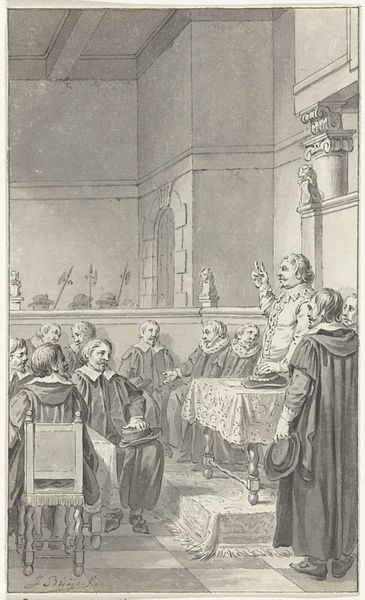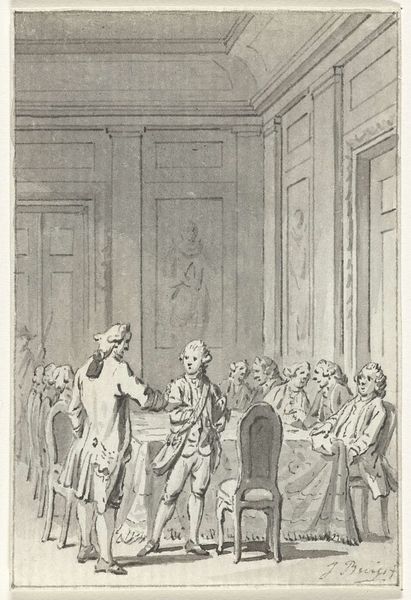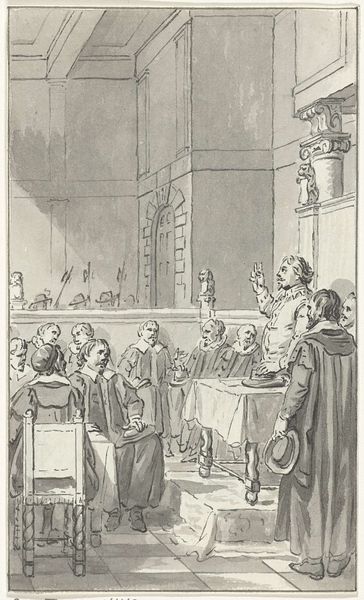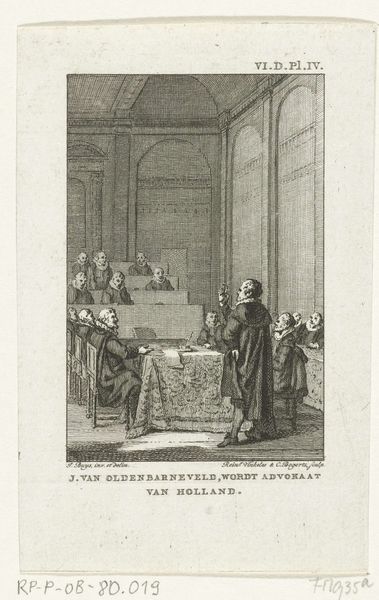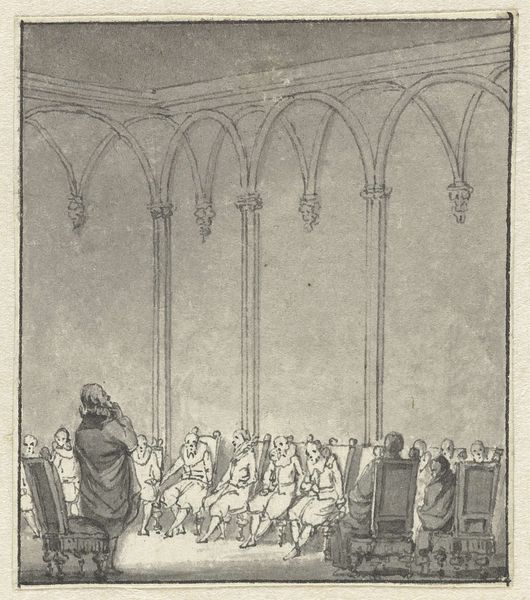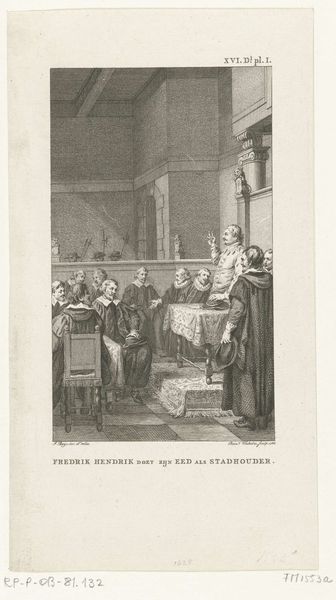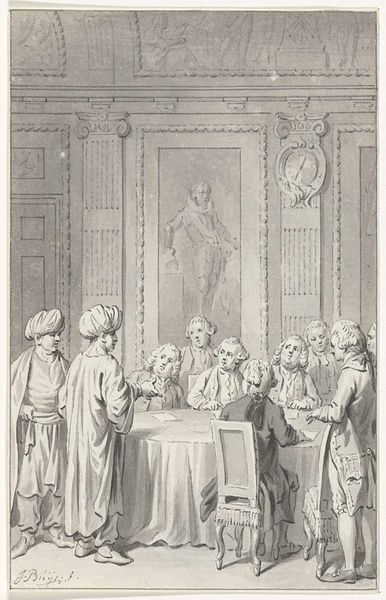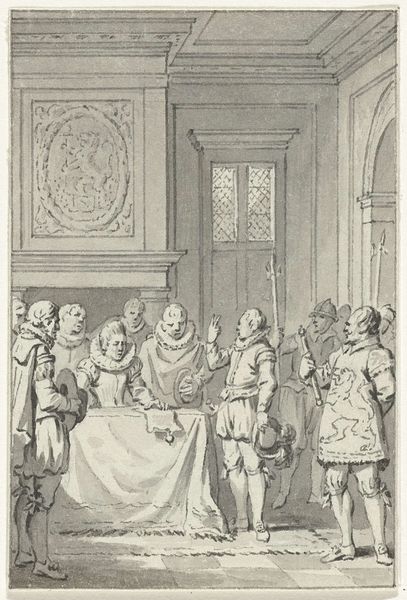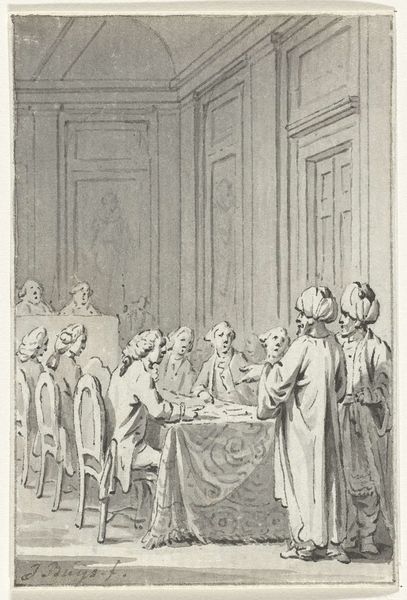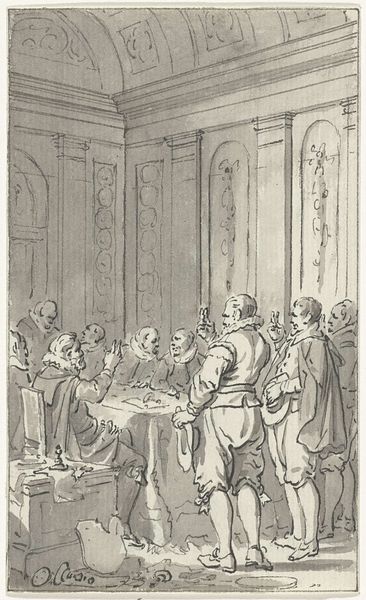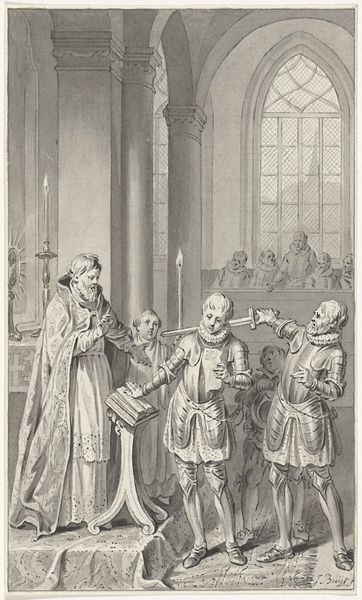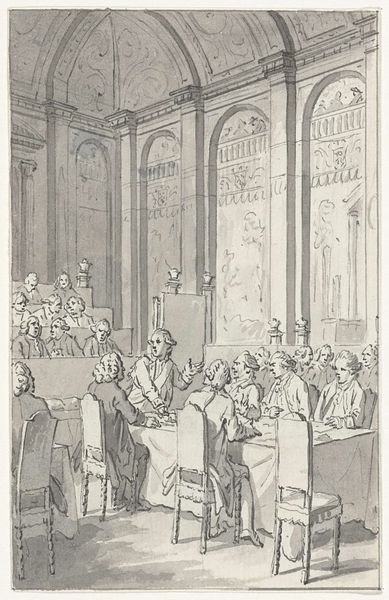
Johan van Oldenbarnevelt doet de eed als Landsadvocaat, 1586 1780 - 1795
0:00
0:00
drawing, ink, pencil, pen
#
drawing
#
neoclacissism
#
quirky sketch
#
narrative-art
#
mechanical pen drawing
#
pencil sketch
#
sketch book
#
personal sketchbook
#
ink
#
sketchwork
#
pen-ink sketch
#
pencil
#
sketchbook drawing
#
pen
#
history-painting
#
storyboard and sketchbook work
#
sketchbook art
Dimensions: height 82 mm, width 56 mm
Copyright: Rijks Museum: Open Domain
Curator: Well, here we have Jacobus Buys' drawing, made between 1780 and 1795, entitled "Johan van Oldenbarnevelt doet de eed als Landsadvocaat, 1586.” It's currently housed here at the Rijksmuseum. My first thought? The sheer quantity of pleated fabric is astounding! Editor: Yes, immediately, it gives me such a muted, almost melancholic atmosphere, doesn't it? Look at how the ink and pencil seem to absorb light, casting a serious tone over the entire scene. Curator: Absolutely, but it's precisely this commitment to representing the textiles of the period—the heavy robes, that gorgeously detailed tablecloth—that captures my attention. The drawing really dwells on how things are fashioned, which in this context feels very pertinent. Editor: True. The textures definitely contribute to the weight of the moment—it's all about the labor behind those folds, and what such labor can symbolize. You see them there taking the oath as Landsadvocaat. The building itself speaks volumes, too; so much labor in every brick. Curator: I see this history playing out in more than one dimension—Buys wasn’t just illustrating an event; he was thinking deeply about its significance nearly two centuries after it occurred. There’s an emotional resonance. All the faces are upturned and expectant... they await judgement and the gravity is definitely present. Editor: Indeed. Consider the materials themselves. The deliberate application of ink and pencil serves to elevate, ennoble…it also solidifies a specific narrative, one constructed as much by the available materials as by historical accounts. The scale makes this less a celebration, and more of an evaluation. Curator: It strikes me, too, that in choosing such an explicitly Neoclassical style, Buys further underscores the themes of order and civic duty central to the story. Neoclassicism, I suppose, felt very aligned with how people imagined the 17th century and its political dramas to have been. Editor: And don't overlook the repetitive marks; hatching and cross-hatching give depth, but also visually echo the meticulous process of building consensus, forming alliances. Look at how so many people in this room appear to be having some level of difficulty focusing... Curator: What you've pointed out certainly amplifies how I see and understand not just the scene, but what it communicates. Editor: And viewing how carefully the drawing displays such human dramas and important textures can deepen our appreciation, also, of Buys' craft.
Comments
No comments
Be the first to comment and join the conversation on the ultimate creative platform.
